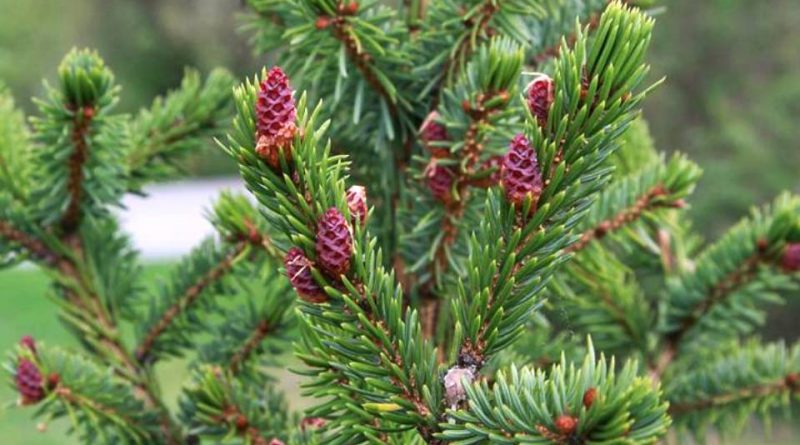Picea omorika
Picea omorika
The Spruce of Serbia (Picea omorika (Pancic) Purk.) Is an arboreal species belonging to the Pinaceae family.
Systematics –
From a systematic point of view it belongs to the Eukaryota Domain, Kingdom Plantae, Pinophyta Division, Pinopsida Class, Pinales Order, Pinaceae Family and therefore to the Genus Picea and to the Species P. omorika.
Etymology –
The term Picea comes from Picea, which was the Latin name of the wild pine in Virgil and Pliny. The specific epithet comes from the Serbian word оморика which simply means “spruce”; in Serbia it is called панчићева оморика in Cyrillic or pančićeva omorika in the Latin alphabet, the “Pančić spruce”.
Geographic Distribution and Habitat –
The Picea omorika has a very limited area and is limited to a very restricted area (about 60 ha in total) between Serbia and Bosnia, near the Drina river and the town of Višegrad, at altitudes between 800 and 1600 m. In Italy it is found in the fossil state in the “varve” of Pianico-Sellere (in the Province of Bergamo). In the cultivated state we find Europe in parks and gardens (especially in the center and north); in Italy it is rather rare.
Description –
The Picea omorika can reach 40 meters in height and has a pyramidal posture, often narrow and columnar. The trunk, in the oldest species, has a thin and cracked rind in brown paper plates. The leaves are needles that in the young twigs are inserted in a spiral, then become combed; plates and greens above, whitish, silver gray below. The male cones are yellowish, 2.5 cm long, at the axils of the needles; the female cones are first purplish-violet and erect, then become brown-reddish and pendulous, up to 6 cm long, elongated and pointed.
Cultivation –
The spruce of Serbia is used mainly in ornamental crops and occasionally, is planted for timber. It is a rustic conifer, without particular needs and that adapts to a wide pedoclimatic category.
Uses and Traditions –
The Picea omorika was discovered in its current area in 1875 by the Serbian botanist Josif Pančić.
The spruce of Serbia is much appreciated for ornamental purposes because of its foliage with silvery reflections and is also used as a Christmas tree. In the past it was also used for the production of carpentry timber; given its limited growth area and the small number of specimens, its exploitation is limited by constraints imposed for its conservation. Its cultivation is therefore limited to ornamental purposes especially in the central and northern areas of the continent.
Preparation Mode –
The Peccio of Serbia, in addition to the ornamental purposes, does not have particular uses of alimentary or therapeutic nature.
Guido Bissanti
Sources
– Wikipedia, the free encyclopedia.
– Treben M., 2000. Health from the Pharmacy of the Lord, Advice and experience with medicinal herbs, Ennsthaler Publisher
– Pignatti S., 1982. Flora of Italy, Edagricole, Bologna.
– Conti F., Abbate G., Alessandrini A., Blasi C. (edited by), 2005. An annotated checklist of the Italian vascular flora, Palombi Editore.
Warning: Pharmaceutical applications and alimurgical uses are indicated for informational purposes only and do not in any way represent a medical prescription; there is therefore no liability for their use for curative, aesthetic or food purposes.


